About Food Education
GMO Labeling Is Here
by Diane Gold on July 5, 2016.
Our main essay is about GMO labeling and kudos to Vermont that its state law has gone into effect. Also mentioned are the increase in pricing and the increase in environmental run off due to genetically engineered sprays, required for produce of GM origin.
Also in this issue….
Dear Organic Produce Retailer
by Diane Gold on June 28, 2016.
Our main essay is a letter to my organic produce retailer describing the hoops I have to jump through just to find out what’s on my food before I buy it.
Also in this issue….
What’s On Your Produce – Part II
by Diane Gold on June 7, 2016.
Our main essay focuses on our food supply, which is our very life force and the idea that we do not consider, rebuff, teach about chemicals we place on that supply.
Also in this issue….
Secret Of Vitamin D
by Diane Gold on November 10, 2015.
Our main essay gives the secret of Vitamin D, our habits and the action steps that help us help ourselves.
Also in this issue….
Food Habits – Continually Upgrading To Good Ones
by Diane Gold on October 27, 2015.
Our main essay talks about food habits and gives action steps that help us make them what’s best for us.
Also in this issue….
Recycling Is Our Responsibility
by Diane Gold on October 13, 2015.
Our main essay talks about recycling, why we do it and whose responsibility it is.
Also in this issue….
Conventional Produce – GMOs And Pesticides
by Diane Gold on October 6, 2015.
Our main essay talks about the term “conventional produce” and how it blinds us to the GMOs that are commonly included in this category.
Also in this issue….
Good Food – The Most Potent Part Of Our Day!
by Diane Gold on September 15, 2015.
Our main essay talks about good food and gives food for thought to the reader.
Also in this issue….
Water Shortage: Our Role
by Diane Gold on March 17, 2015.
Our main essay talks about water shortage and why we are involved, no matter how much water we have.
Also in this issue….
Extinction: Are We Responsible?
by Diane Gold on February 24, 2015.
Our main essay talks about extinction and our responsibility through a guest post by Richard Oppenlander, D.D.S., researcher, lecturer and author.
Also in this issue….
Plastics In Food And Bloodstream
by Diane Gold on February 17, 2015.
Our main essay talks about plastics in food and inside our blood.
Also in this issue….
Nut Milk Made Easily
by Diane Gold on February 10, 2015.
Our main essay talks about nut milk making it ourselves. There’s a recipe that’s easy, peasy.
Also in this issue….
Olive Oil Science
by Diane Gold on February 3, 2015.
Our main essay talks about what happens to olive oil when it gets too hot. We also take a look at the qualifications of people who give the answers.
Also in this issue….
Who Pays? Our Habit Of Not Paying For Our Food
by Diane Gold on January 27, 2015.
Our main essay talks about who pays for the land, oceans, soil, water that we overuse to produce food and the species we endanger or wipe out in the process. It applies to all people who eat.
Also in this issue….
5 Ways To Improve Your Health And Mine In 2015
by Diane Gold on January 13, 2015.
Our main essay talks about 5 ways to improve your health and mine. Each of the 5 is its own one minute exercise.
Also in this issue….
Our Food Habit Of Not Asking The Right Question
by Diane Gold on October 21, 2014.
Our main essay talks about our food habit of not asking the right question. Easier than we think!
Also in this issue….
Composting: How And Why
by Diane Gold on October 7, 2014.
Our main essay talks about composting and how to proceed successfully.
Also in this issue….
Big Food And Drug Donate To Cancer Research
by Diane Gold on September 30, 2014.
Our main essay talks about donations that Big Food and Big Drug companies give to cancer research and other disease organizations so they will become beholden to them.
Also in this issue….
What’s On Your Produce?
by Diane Gold on September 23, 2014.
Our main essay talks about knowing what’s on our fruits and vegetables with some surprising information about what the National Organic Program allows.
Also in this issue….
Nutrient Composition, As Per T. Colin Campbell
by Diane Gold on September 16, 2014.
Our main essay talks about nutrient composition, the percentage of fats, proteins and carbohydrates that T. Colin Campbell, grand nutritionist, has discovered is the correct balance.
Also in this issue….
9 Ways Cacao Can Improve Our Health
by Diane Gold on September 9, 2014.
Our main essay talks about how cacao, the super food, first used by Latin Americans as early as 1400 B.C. E., benefits our health.
Also in this issue….
Turmeric In The Modern World
by Diane Gold on July 29, 2014.
Our main essay is about turmeric, its benefits and its patentability and why drug companies don’t study what they can’t patent.
Also in this issue….
What If Nike’s Logo Meant Food For The Poor?
by Diane Gold on July 22, 2014.
Our main essay focuses on a “what if” scenario. “What if” the largest multinational companies’ missions were to benefit the world’s poor with food, water, clothing, housing, health care! This article suggests a possible model for this to happen. It also offers food for thought to encourage us to innovate the solution for ourselves.on patient’s rights and how our accepting doctor’s orders is not in our best interest until we’ve researched options and been given choices.
Also in this issue….
Our Right To Freedom-What If Big Biz Sues To Repeal Vermont’s GMO Labeling Law?
by Diane Gold on June 17, 2014.
Our main essay is about how to stand up for our right to freedom using the example of the GMO labeling vote in Vermont.
Also in this issue….
Weight Loss Secret Weapon
by Diane Gold on June 3, 2014.
Our main essay is about an accidental secret weapon I found for weight loss. And it’s a super food.
Also in this issue….
Citizens For Change: No More Status Quo GMOs
by Diane Gold on May 27, 2014.
Our main essay is about taking action toward protecting our food supply from genetic modified organisms (GMOs).
Also in this issue….
Maca: Superfood For Energy And Immune System
by Diane Gold on May 6, 2014.
Our main essay in this issue is about maca, the amazing superfood grown at over 10,000 feet above sea level.
Also in this issue….
Low Vitamin D Linked To Disease In 2 Big Studies
by Diane Gold on Apr. 8, 2014.
Our main essay was written by Anahad O’Connor, our expert from The New York Times, and edited by the publisher. It is research about vitamin D and disease.
Also in this issue….
The Habit Of Eating Meat May Be Hurting Us
by Diane Gold on Mar. 11, 2014.
Our main essay is about the habit of eating meat and what consequences come from that.
Also in this issue….
Quitting A Habit!
by Diane Gold on Feb. 25, 2014.
Our main essay talks about the the term “quitting” as it applies to habit change.
Also in this issue….
Healthy Eating: Why Does The U.S. Fall Behind?
by Diane Gold on Jan. 28, 2014.
Our main essay talks about the United States is not number one in healthy eating and why.
Also in this issue….
Pesticides: Which Fruits-Veggies Have Least?
by Diane Gold on Nov. 12, 2013.
This week, our main essay talks about pesticides and includes two consumer guides to buying produce with the least amount of residue.
Also in this issue….
6 Great Reasons For Plant-Based Nutrition
by Diane Gold on Nov. 5, 2013.
This week, our main essay gives 6 valid reasons to consider plant-based nutrition.
Also in this issue….
Is Sugar Good For Our Health?
by Diane Gold on Oct. 29, 2013.
This week, our main essay talks about sugar and whether it is good for our health.
Also in this issue….
Demystifying Traditional Chinese Medicine
by Diane Gold on Sept. 16, 2013.
This week, we bring you the highlights of our interview with George Love, Doctor Of Oriental Medicine who demystifies it for all of us.
Also in this issue…
Can Gut Microbes Help With Weight Loss?
by Diane Gold on Sept. 9, 2013.
This week, our main article focuses on a study about gut microorganisms as a possible technique for weight loss.
Also in this issue…
Reading Food And Supplement Labels: How Habits Form
by Diane Gold on Aug. 19, 2013.
This week, our main article focuses on food and supplement labels and how we form habits as a result.
Also in this issue…
How Water Works On Habit Change
by Diane Gold on July 22, 2013.
This week, our main article talks about this simple technique that can mean the difference between habit change and frustration. And there are simple action steps to follow.
Also in this issue…
Supplements vs. Pharmaceuticals: The Comparison
by Diane Gold on July 8, 2013.
This week, our main article talks about some of the differences between supplements and pharmaceuticals, including a quote from Dr. Jaroslav Boublik.
Also in this issue…
The Supplement Game: Are You In It?
by Diane Gold on July 1, 2013.
This week, our main article talks about taking supplements at the expense of learning to eat well.
Also in this issue…
hr />
Habits In Medical Care: Part One – What Certificate Is That?
by Diane Gold on June 3, 2013.
This week, our main article focuses on habits obtained regarding medical care.
Also in this issue…
Changing Food Habits: Are You Eating GMOs, Organic Foods Or …?
by Diane Gold on May 20, 2013.
This week, our main article focuses on changing our food habits as we have more knowledge of GMOs (genetically modified organisms) and foods that are labeled “organic.”
Also in this issue…
Change A Habit: How The Health Care System Has Taught Us Bad Habits
by Diane Gold on Mar. 18, 2013.
This week, our main article is about how the U.S. Health Care System has led us to need to Change A Habit.
Also in this issue…
Sprouts: 7 Reasons Why. With Commentary By Jason McCobb, aka Farmer Jay
by Diane Gold on Mar. 11, 2013.
This week, our main article is about sprouting, with guidance from Farmer Jay of Farmer-Jay-Pure-Organics.
Also in this issue…
Timing Of Meals Affects Weight Loss
by Diane Gold on Feb. 11, 2013.
This week, we have an article on Timing Of Meals by Anahad O’Connor, followed by comments and action steps by me.
Also in this issue…
The Protein Myth: That We Need All The Essential Amino Acids At Every Meal
by Diane Gold on Feb. 4, 2013.
This week, we have an article about the protein myth, the fact that it’s not necessary to combine proteins to get all the amino acids in one sitting.
Also in this issue…
Turning Habits Into Health: How 1 Step At A Time Can Make The Change
by Diane Gold on Jan. 28, 2013.
This week, we talk about Turning Habits Into Health and the 1-step at a time approach to habit change.
Also in this issue…
Juicing At Home vs. Juice From The Health Food Store
by Diane Gold on Jan. 21, 2013.
This week, we talk about juicing, the pros and cons to juicing at home vs. the health food store. We also define organic vs. natural vs. vegan.
Also in this issue…
Water For Weight Loss, Emotional Eating Turned To Healthy Hydration
by Diane Gold on Jan. 14, 2013.
This week, we talk about how drinking water can temper food cravings habitually. We also consider that water is not in abundance for all people.
Also in this issue…
Food Cravings: How To Maximize Them For Our Good Health
by Diane Gold on Jan. 7, 2013.
First issue in 2013, and we are raring to go!
This week’s article talks about maximizing our food cravings so that we can be healthier.
Also in this issue…
Plant-Based Nutrition And 3 Weight Loss Factors That Come Along, Too
by Diane Gold on Dec. 31, 2012.
This week’s article talks about plant-based nutrition and 3 weight loss factors to look for.
Also in this issue…
Appetite Control: How Saving Someone Other Than Ourselves Balances Appetite
by Diane Gold on Dec. 17, 2012.
This week’s article talks about the appetite and how saving someone other than ourselves can balance our appetite.
Also in this issue…
Mushrooms For Weight Loss: Nature’s Secret Strategy In A Small Package
by Diane Gold on November 6, 2012.
This week, our main article is all about mushrooms, their nutrition and how they satisfy our appetites and heal us.
Also in this issue…
Why Green Tea Can Help With Teen Weight Loss And What’s In It
by Diane Gold on October 22, 2012.
This week’s main article is about green tea for teen weight loss. There are action steps for both daughters and moms.
Also in this issue…
Teen Weight Gain And Sugary Drinks: A Closer Look
by Diane Gold on October 8, 2012.
This week’s main article is about teen weight gain and sugary drinks. How shocking that sugary drinks are the largest single caloric food source.
Also in this issue…
Weight Loss For Teen Girls: 5 Quick Appetite Tips
by Diane Gold on September 10, 2012.
This week’s main article is for teen girls. We give 5 quick tips to pick up and use today for the growing teenage girl having a hard time with weight.
Also in this issue…
Bad Habits: How To Change A Habit
by Diane Gold on August 20, 2012.
This week’s main article is about Changing Bad Habits. We have included access to a flowchart with a step-by-step diagram.
Also in this issue…
Get Your Weight Off: 10 Surefire Tactics That Will Reduce Your Weight Now
by Diane Gold on July 23, 2012.
Our main article was written by our panelist and registered dietician, Elisa Rodriguez. Her 10 tactics are so important because they can individually be implemented without much effort. The goodness we will feel from any 1 powers up our motivation to repeat the tactic the next day.
Also in this article…
Revelations Of A Weight Warrior, Trish Carr: A Testimony For Moms And Daughters-Part III
by Diane Gold on July 5, 2012.
Here is the third part in our three-part series based on an interview with Trish Carr, Warrior Of Weight. Within this article is Trish’s quote that food is just a therapy. Anyone who finds the quote…
Also in this issue…
Revelations Of A Weight Warrior, Trish Carr: A Testimony For Moms And Daughters-Part II
by Diane Gold on July 2, 2012.
This week, we have parts two and three of our three-part series with Trish Carr, Warrior Of Weight. Here is part two where Trish gives instructions on using stir fry for snacks.
Also in this issue…
Revelations Of A Weight Warrior, Trish Carr: A Testimony For Moms And Daughters-Part I
by Diane Gold on June 25, 2012.
We have interviewed Tris Carr. This is the first of a three-part feature where she shares her insights about her ongoing journey with food, filled with strategies and tips we can all relate to.
Also in this issue…
Wheatgrass Juice: What’s So Good About It?
by Diane Gold on June 11, 2012.
Wheatgrass Juice has some amazing, healing properties. We go over 10 of them and offer 4 or 5 easy action steps to help everyone get started with making it a regular habit.
Also in this issue…
The Juice Cleanse
by Diane Gold on May 28, 2012.
Elisa Rodriguez has written a wonderful article called The Juice Cleanse. She has prepared this discussion to instruct us how to go about it with the safest result. have added some discussion where it says Publisher’s Note.
Although not everyone will use the cleanse, the article gets us in the mood to consider the benefits of regular juicing for fun and health. There is also a blender option later on in the article.
Also in this issue…
The Food Advocate
by Diane Gold on May 19, 2012.
This is a new program for anyone to get the help needed to THRIVE with food.
Lunch Hour, The Movie: An In-Depth Look At The Lack Of Nutrition In School Food
by Diane Gold on April 16, 2012.
Our main article is a review of the worthwhile documentary, Lunch Hour, a spectacular look at our school food system with ways we can help change it.
Also in this issue…
The O Word And How Education Develops Sensitivity In Speaking About Weight Issues
by Diane Gold on February 20, 2012.
I’m really excited about this week’s main essay. It touches upon some of the most important issues for family members and friends of and those who struggle with extra body weight.
Also in this issue…
Food Education: Who’s Doing It And Who’s Responsible For It?
by Diane Gold on February 13, 2012.
This week, our main article talks about food education and school nutrition. Our kids spend the bulk of their day in school. This means the food they eat will either come from home, school or a nearby store. Florence Bernard, our education expert, gives her insights on whether or not our education system prepares our kids with nutrition knowledge.
Also this issue…
The Avocado Story And Fat Can Be Good
by Diane Gold on January 16, 2012.
Our main article comes from Anahad O’Connor and Dave Lieberman from their book, The 10 Things You Need To Eat. It talks about why avocados are healthy for you and why their fat is good fat.
New Year’s Resolutions That Work: Weight Loss, 2012
by Diane Gold on January 2, 2012.
This article recognizes why we make New Year’s resolutions and targets weight loss resolutions and why some work better than others. Giant resolutions tend to be much harder to keep since they require much more staying or maintenance power, which can be a newly learned behavior, over time.
How To Break A Food Trance
by Diane Gold on December 19, 2011.
Our featured essay is an interview with Sharon and Glenn Livingston, PhDs and experts on emotional eating. This transcription and the audio below highlights some of the most straight forward ways to combat what happens when you go into a food trance.


 Since
Since 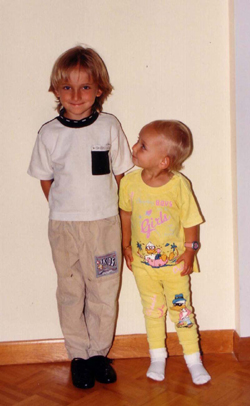
 The important thing is to remember to let go. When we do, we give up the nature to be part of everything because we know best. It is sometimes difficult to step back, but sometimes, it is the right thing to do. Whether to input our opinions/lessons/directions or to stand by as our children make their own decisions based upon what we have taught them to do; we want our children to excel on their own. Letting go is an import step toward this excellence.
The important thing is to remember to let go. When we do, we give up the nature to be part of everything because we know best. It is sometimes difficult to step back, but sometimes, it is the right thing to do. Whether to input our opinions/lessons/directions or to stand by as our children make their own decisions based upon what we have taught them to do; we want our children to excel on their own. Letting go is an import step toward this excellence.


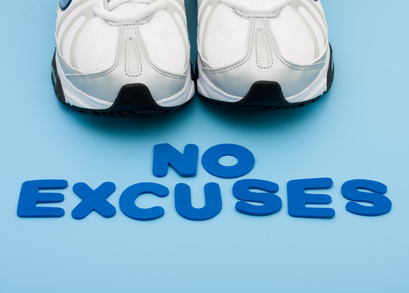 As a mom, we can tell our daughter that we want to hear about her day, but that we are starting a new fitness program that requires walking around the block 1 time. We can say we’d like to hear about her day while we are doing that walk. If she is under 10, we can probably say,
As a mom, we can tell our daughter that we want to hear about her day, but that we are starting a new fitness program that requires walking around the block 1 time. We can say we’d like to hear about her day while we are doing that walk. If she is under 10, we can probably say, How often do our daughters want to buy something for themselves? When our daughters are carrying extra weight, they might not be interested in new clothing because they may not like how it looks on them. In the coming weeks, we will have a world renowned fashion expert talk about the clothing she has created because we are all beautiful.
How often do our daughters want to buy something for themselves? When our daughters are carrying extra weight, they might not be interested in new clothing because they may not like how it looks on them. In the coming weeks, we will have a world renowned fashion expert talk about the clothing she has created because we are all beautiful.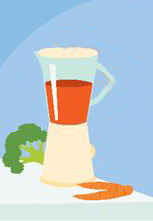 2 2/3 ounces of carrot juice
2 2/3 ounces of carrot juice This coming Saturday, April 28, is my birthday. Oh, wait. Broadcasting this fact is the very opposite of our message here: that of getting away from me, me, me. This article is about the power we have as developed individuals to make a difference on global issues.
This coming Saturday, April 28, is my birthday. Oh, wait. Broadcasting this fact is the very opposite of our message here: that of getting away from me, me, me. This article is about the power we have as developed individuals to make a difference on global issues.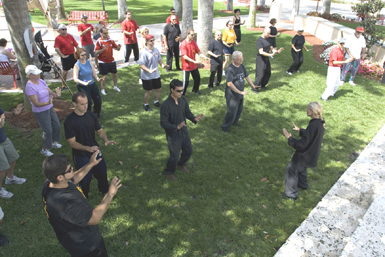 I like that image. Let this flamboyant vision not lead us away from the grand ultimate purpose of tai chi in 2012, which is not a display for publicity, a way to get a date, a way to be cool or marketing for consumerism; although all of these things may happen as a result of doing the training in a public place. The point is to spread peace, harmony and unity through exposing people to movement that changes mindset leading to global action. Change in mindset, as with any discipline, is a process.
I like that image. Let this flamboyant vision not lead us away from the grand ultimate purpose of tai chi in 2012, which is not a display for publicity, a way to get a date, a way to be cool or marketing for consumerism; although all of these things may happen as a result of doing the training in a public place. The point is to spread peace, harmony and unity through exposing people to movement that changes mindset leading to global action. Change in mindset, as with any discipline, is a process. PASSION
PASSION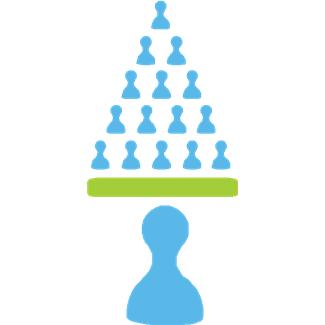 If I do tai chi and teach 8 students, then 8 minds get changed. If these 8 students have 8 students, then 64 minds get changed. If these 64 have 8 students, then 512 minds get changed. If this group of 512 goes to 1 of the 300 World Tai Chi And Chi Kung Day events and mingles with the 512 students of each of 10 other teachers; that’s 5,632 minds at 300 events. That’s over a million changed minds, which is the power of community.
If I do tai chi and teach 8 students, then 8 minds get changed. If these 8 students have 8 students, then 64 minds get changed. If these 64 have 8 students, then 512 minds get changed. If this group of 512 goes to 1 of the 300 World Tai Chi And Chi Kung Day events and mingles with the 512 students of each of 10 other teachers; that’s 5,632 minds at 300 events. That’s over a million changed minds, which is the power of community.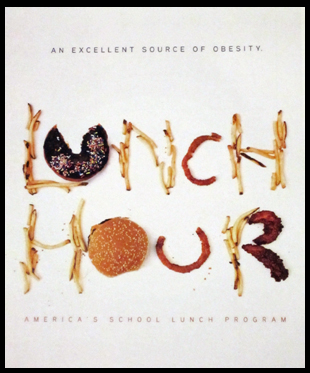
 This movie is a call out to all of us to take notice and take action. We see the history of the school food industry, including how the government began offering food programs to assist our farmers. We hear about past and present financial struggle. We are exposed to complex relationships between food companies and politicians as well as government regulations that restrict all but the largest suppliers.
This movie is a call out to all of us to take notice and take action. We see the history of the school food industry, including how the government began offering food programs to assist our farmers. We hear about past and present financial struggle. We are exposed to complex relationships between food companies and politicians as well as government regulations that restrict all but the largest suppliers.
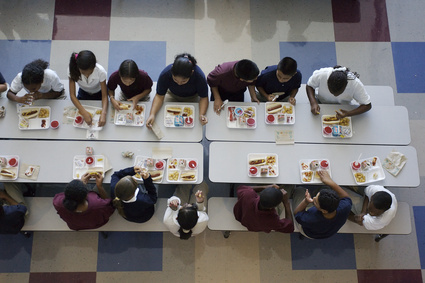
 One of the greatest distractions in our lives is the phone. We rarely turn it off.
One of the greatest distractions in our lives is the phone. We rarely turn it off. True phone story: Years ago, I recall saying no to my dad, Harry, when I was 13, when he asked me to go see The Guns Of Navaronne with him. I said no because I was waiting by the phone for one of the girls in my group to call and invite me to go downtown. The result of my having said no was that my father went to the movies on his own, the girls never called me which hurt my feelings, I hurt my father’s feelings and he passed before there was another movie opportunity (his photo left).
True phone story: Years ago, I recall saying no to my dad, Harry, when I was 13, when he asked me to go see The Guns Of Navaronne with him. I said no because I was waiting by the phone for one of the girls in my group to call and invite me to go downtown. The result of my having said no was that my father went to the movies on his own, the girls never called me which hurt my feelings, I hurt my father’s feelings and he passed before there was another movie opportunity (his photo left). Have you ever noticed that for many of our home services, like telephone, electric, tech support; we are on hold for lots of time? Those of us who cannot relate to this may be too young to have handled this type of call or may pay other people to make the calls.
Have you ever noticed that for many of our home services, like telephone, electric, tech support; we are on hold for lots of time? Those of us who cannot relate to this may be too young to have handled this type of call or may pay other people to make the calls. Our second action step is to go talk it out with someone, anyone. The power comes to us from changing our perspective and not dwelling on the words of some blockhead at school or work or in the street. If we don’t have an available friend, we can go to the library, the local food mart, the closest religious structure, the grocery store, the café. There are lots of people just waiting to listen to us. It will create more power when we approach them.
Our second action step is to go talk it out with someone, anyone. The power comes to us from changing our perspective and not dwelling on the words of some blockhead at school or work or in the street. If we don’t have an available friend, we can go to the library, the local food mart, the closest religious structure, the grocery store, the café. There are lots of people just waiting to listen to us. It will create more power when we approach them. M: Oh, absolutely. And that’s one of the secrets. I think that many parents feel that they’re somehow different because they have these emotions. And that their parenting must be different because it looks like other people handle everything fine. And everything is perfect in their family. And once you delve into what goes on, you realize that 99.9% of parents feel these kinds of emotions.
M: Oh, absolutely. And that’s one of the secrets. I think that many parents feel that they’re somehow different because they have these emotions. And that their parenting must be different because it looks like other people handle everything fine. And everything is perfect in their family. And once you delve into what goes on, you realize that 99.9% of parents feel these kinds of emotions.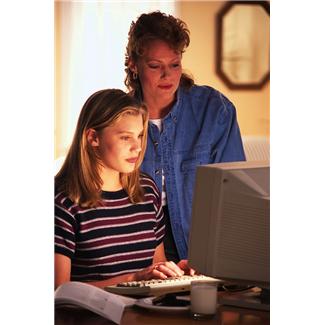 3) RECOGNIZE ONE GOOD THING OUR DAUGHTER DOES FOR US
3) RECOGNIZE ONE GOOD THING OUR DAUGHTER DOES FOR US Picture a child screaming in a supermarket for a candy bar. Now put yourself in the place of the child’s parent. What are you thinking or feeling? If you are like almost half of the families we serve, you might be thinking what a catastrophe this is. You are becoming anxious and feel that all eyes are on you. You might also be feeling judged as a bad parent and can’t wait for this to stop. And because this seems to happen so often no matter what you try, you think that your child is just not capable of behaving. Despite your better judgment you decide to give your child the candy because you know the tantrum will end. Negative thoughts about your skills as a parent and perhaps about your child’s ability to improve seem to get in the way of good parenting skills—sometimes “giving in” just to keep the peace.
Picture a child screaming in a supermarket for a candy bar. Now put yourself in the place of the child’s parent. What are you thinking or feeling? If you are like almost half of the families we serve, you might be thinking what a catastrophe this is. You are becoming anxious and feel that all eyes are on you. You might also be feeling judged as a bad parent and can’t wait for this to stop. And because this seems to happen so often no matter what you try, you think that your child is just not capable of behaving. Despite your better judgment you decide to give your child the candy because you know the tantrum will end. Negative thoughts about your skills as a parent and perhaps about your child’s ability to improve seem to get in the way of good parenting skills—sometimes “giving in” just to keep the peace. Here we taught them to become aware of the interfering thoughts and taught them skills to either distract themselves (sometimes with humor) or perhaps substitute the negative thoughts with positive ones (“I have a plan for dealing with this tantrum and things will get better.”). They learned both how to help their child but also how to be more positive and hopeful in their application of these plans.
Here we taught them to become aware of the interfering thoughts and taught them skills to either distract themselves (sometimes with humor) or perhaps substitute the negative thoughts with positive ones (“I have a plan for dealing with this tantrum and things will get better.”). They learned both how to help their child but also how to be more positive and hopeful in their application of these plans. On the other hand, parents who received the optimism training did not concede to all of their child’s demands and persisted in getting their children to do things like put their toys away or get dressed without problems. Their optimism training helped them to keep it up and not concede.
On the other hand, parents who received the optimism training did not concede to all of their child’s demands and persisted in getting their children to do things like put their toys away or get dressed without problems. Their optimism training helped them to keep it up and not concede.





